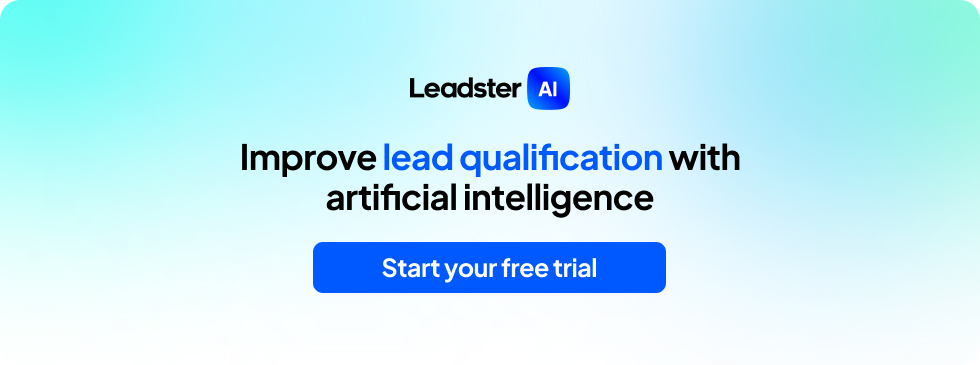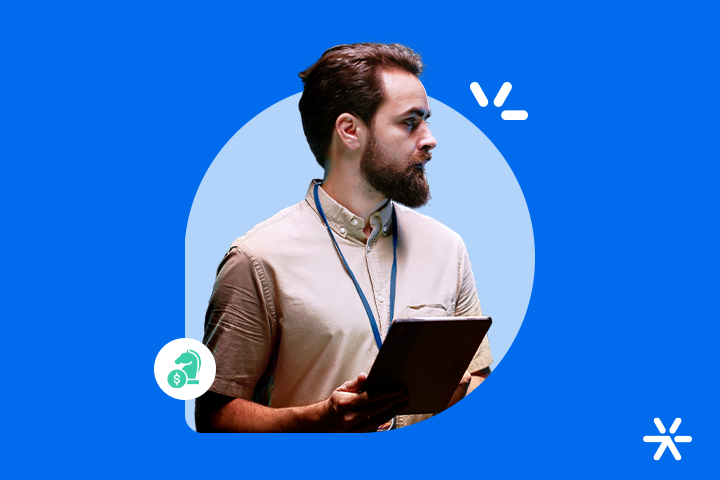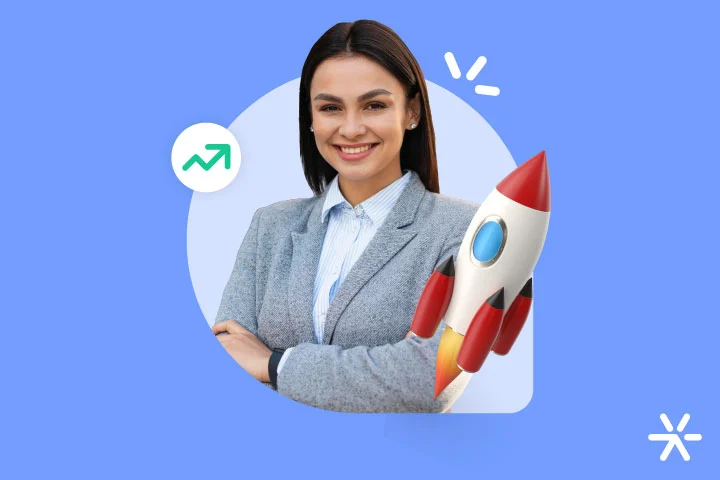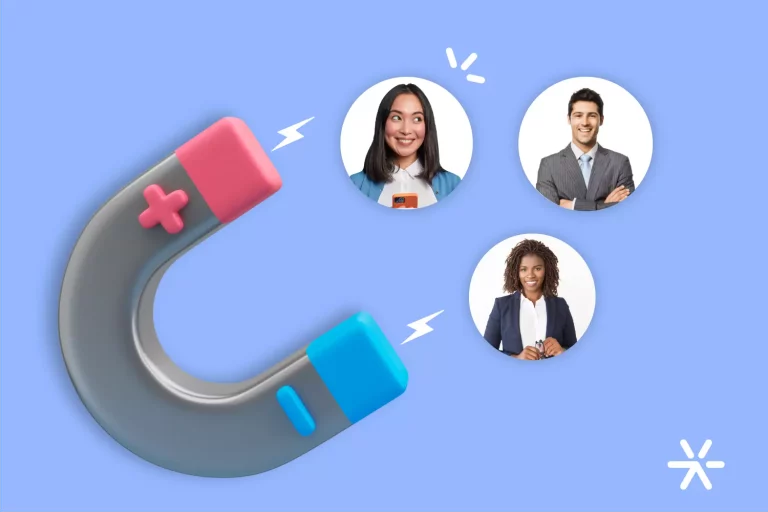The SaaS Sales Process: Build, Scale, and Profit Big!
The SaaS sales process is one of the most interesting topics to discuss. Especially due to its flexible nature, adapting to the needs and preferences of the companies that implement it.
SaaS sales can be absolutely simple. Setting up a website, offering a demo, running a few ads, and often just waiting can work without major hiccups.
It can be simple if you want it to be. But if you want to increase sales month after month, have predictability in your revenue, and the ability to plan around a more assured expansion, you need to be a bit more complex.
In this article, we will delve deep into the SaaS sales process. I’ve brought some funnel examples, a practical guide on how to structure your sales process, and a few key points to understand how to sell software.
But first, we need to remember some important concepts. Shall we begin?
What is SaaS?

Before diving into everything that involves SaaS sales, it’s nice to remember what exactly this type of operation is, and what sets this business model apart from others.
SaaS stands for Software as a Service. This means that the product you sell is both software and a service at the same time, a subscription that your customer pays for monthly.
At the same time, you also have a responsibility to your customer: the continuous development of your product, offering support, partnership plans, and so on.
Throughout the article, you will see a lot about the sales process itself, but it is very important to understand especially the expectations of your customers regarding the business model.
The SaaS customer expects a constant partnership. And the SaaS company expects its customer to succeed with its tool and encourages them in this direction.
It is not uncommon to see partnerships that involve commissions, for example. Here at Leadster, we offer commissions to agencies that sell our tool to their clients.
Today, there are still various types of software that are not SaaS: Windows, Photoshop, Corel Draw — all of these require a one-time payment for the license.
But SaaS products are more common and popular: HubSpot, RD Station, Salesforce, and even more advanced Artificial Intelligence tools like ChatGPT.
Important Concepts to Understand SaaS Sales
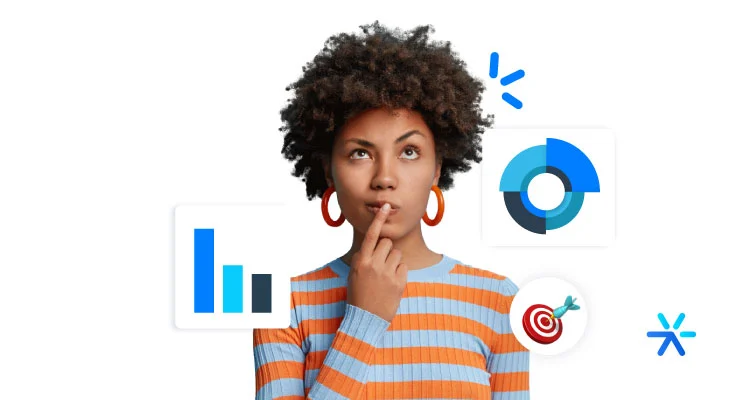
Okay, so we’re clear on what SaaS really is, right? Now let’s talk about some key points of SaaS marketing.
Some of these concepts are a bit basic: we’ll discuss Marketing and Sales Funnel, Inbound Marketing, Content Marketing, and a few other important ones.
At the end of each topic, I’ve also included links for further reading on each of these concepts. Keep them bookmarked!
If you already know these terms and what they mean within a Digital Marketing strategy, you can skip to the next topic. It’s already introducing the SaaS sales process.
But if you want to refresh your memory or are unfamiliar with the terms, keep reading as all these techniques and methodologies are extremely important and will be mentioned throughout the article.
Let’s get started:
Inbound Marketing
Inbound Marketing is a methodology known for its main philosophy: attraction. In fact, its other name is Attraction Marketing.
The job of Inbound is to impact potential customers in a slightly different way from its counterpart, Outbound Marketing: instead of bringing the brand to customers, Inbound aims to make the brand more interesting so that customers come to it.
And in this way, it’s the customers themselves who seek out the brand, get to know it, evaluate its products and services, and decide on a purchase.
Inbound Marketing is probably used in all SaaS sales processes today. It was developed and popularized, in fact, by a SaaS platform: HubSpot.
Content Marketing
Content Marketing is one of the most widely used tools in Inbound Marketing. It’s through Content Marketing that the brand connects with more people and starts generating leads.
Basically, the job of Content Marketing is to produce material related to the pains, doubts, and interests of your target audience. This material can take various forms, such as:
- A blog to generate leads;
- A YouTube channel;
- A streaming channel on Twitch;
- Presence on Instagram and Facebook;
- A profile on LinkedIn;
- Videos on TikTok;
- Partnerships with influencers;
- Among others.
Another important aspect of content marketing specific to SaaS is that it acts as the foundation of a strategy to educate your customer base and generate demand.
Many SaaS sales processes happen with much greater autonomy than other service companies.
It’s an important part of the PLG philosophy — Product Led Growth — that you can guide the entire sales process without involving the sales team. And this is only possible with strong content marketing serving as a support base for users.
Performance Marketing
This methodology is related to the creation, evaluation, and constant maintenance of ads on the most popular platforms.
These platforms are usually Google Ads, Social Ads, and ads on marketplaces (like Amazon, Mercado Livre, and B2W, for example).
The work of Performance Marketing is quite different from Content Marketing and also generates different results. But it’s very common to find points where the two methodologies blend together quite a bit.
For example: you can host a live webinar (Content Marketing) but set up ads to get more registrations (Performance Marketing).
Or you can create blog posts on topics you master and create ads that lead to them, increasing your overall site traffic and benefiting even other articles, which also become more attractive to Google.
I highly recommend reading our article on Performance Marketing if you’re not yet familiar with the topic.
Data-Driven Process
This is another important concept, but it’s not specifically about an exact technique, but rather a business vision, a concern in always generating and analyzing data to make important decisions. This can be within marketing or outside of it.
In Digital Marketing, everything you do generates data. Look at Content Marketing, for example: when you start working on it, you can have extremely detailed information about its performance through Google Analytics and Search Console.
The same goes for ads on any platform. And also the same for lead generation.
The data-driven process, which literally means “guided by data,” is basically analyzing the available data and making decisions based on what they say.
What’s the Difference Between SaaS Sales and a Typical Sales Process?
The sales process of any company, when working with Digital Marketing, follows some well-defined parameters.
For example: most of them work with a Marketing and Sales Funnel. Most of them work with both Inbound and Outbound Marketing.
But there’s a basic difference between the SaaS sales process and the more common ones: the way the work is done.
SaaS sales tend to be more complex and involve quite drastic variations in all classic Digital Marketing techniques.
But of course, it all depends on the company. In this article, we need to talk a bit more about how these differences manifest, so you understand what the boundaries of the variations are. And so you can surpass them, of course 😉
Let’s go:
Differences in Sales Speed
Simpler products tend to have little variation in the overall speed of their sales.
Think of someone selling online courses, for example. The sales process differs from person to person. But generally, the sales speed has a very representative average of the entire process.
SaaS sales are a bit different. You can have two personas with completely different speeds. Just look at SaaS platforms that work with a B2C audience and another B2B audience — it’s expected that B2B will take longer to close.
This difference in sales speed becomes quite clear when we understand the differences between SaaS products themselves. Even those in the same segment can have such big differences that the actual selection process takes time.
An example is Leadster’s chatbot and other types of chatbots. In theory, the product is similar, right? But in practice, Leadster’s chatbot is one of the few in Brazil focused on lead generation directly on your website.
Compare it with chatbots that operate on WhatsApp, for example, and you’ll see how completely different the products are.
All of this contributes to a sales speed that varies greatly. And even if it’s stable, it’s still higher than conventional retail.
Differences in Relationship
With a slower and more complex process, it’s natural that SaaS sales also require a completely different approach to addressing their potential customers — called prospects.
SaaS sales are more complex and very valuable. It’s not “just another sale” — it’s a subscription that can last for years and years. Each sale has the potential to bring in thousands of dollars in profit over its lifetime.
For this reason, the process tends to be much more in-depth, personalized, and precise. For example: if a prospect becomes a lead by doing a product demo, the best SaaS companies contact them in less than 10 minutes.
It’s very common, in fact, for marketing teams to contact the lead directly just because they downloaded an e-book. You won’t find this even in abandoned carts in e-commerce.
The relationship with the prospect is a fundamental part of the SaaS sales process. Throughout the article, we’ll give a few more examples of how it happens.
Differences in Sales Model
You’ll find several differences in the SaaS sales model compared to common commercial processes.
For example: think of an independent sales representative selling car parts. They need to define three key points with their client: quantity, price, and terms/warranty.
In SaaS sales, the model is much more complex. The most basic difference you’ll find is in the plans: the cheaper ones have fewer features, while the more expensive ones have more.
And it doesn’t stop there: the onboarding process, for example, may be included in the product price itself. Additional meetings may be charged separately. The trial period can be extended, etc.
And the subscription model itself is already completely different from traditional retail, even for software. You don’t need to pay $500 every year to use Windows on your computer. But Microsoft doesn’t offer 10% of the support that SaaS products do.
SaaS sales models vary greatly from company to company, so it’s difficult to say exactly what the differences are. But you’ll find them. A lot of them.

Differences in Metrics
SaaS sales will rely on some very different metrics from other companies in other segments.
This is because, as we’ve seen so far, they need to describe not only a different sales process but also a business model that’s unconventional in many cases.
SaaS values user independence a lot whenever possible. And because of that, companies in this segment need to monitor very frequently how user generation is going and its impact on their revenue.
Look at LTV, for example — Lifetime Value. It indicates the value of individual customers or groups of customers considering their lifecycle. This is very necessary in a subscription model.
Another important one is Churn Rate, or the rate of cancellations and unsubscriptions. Since SaaS sales are often completely independent, cancellations are too, and they can happen overnight.
These are just two examples of metrics that are not only important for SaaS sales but also very active. Companies that measure them immediately realize that they can be the difference between success and failure in this market.
We have a whole article discussing SaaS metrics. Check it out below:
💡The 20 Most Fundamental SaaS Metrics to Keep an Eye On
Understanding the Three Models of SaaS Sales

Now that we’re well advanced in understanding the differences in the SaaS sales process compared to other types of products, we need to delve deeper into the internal differences within the process.
That’s right: in addition to variations with the rest of the market, SaaS sales have variations within themselves.
There are three major types of SaaS sales to consider. I’ve listed the three here in this topic, and you’ll notice how they are fundamental indicators of your own business model.
This is probably the most important topic for those who are just starting to design their product or are just fine-tuning some points before going to market. So read it carefully, okay?
Let’s go:
Enterprise
This is a personalized plan, usually offered to B2B clients and, in many cases, tailor-made to meet the needs of specific accounts in an ABM — Account-Based Marketing strategy.
Not all SaaS companies offer this type of plan. Those that do usually work it in a separate area in the “Pricing and Plans” category on the website, including direct contact with a company representative.
The Enterprise plan also has significant variations in pricing for each client, depending on what they need.
Think of a base product, with all its features. To sell it in the traditional way, you separate these features into different plans, right?
The Enterprise plan is tailored for a client, often with their help, and is not available to the general public, who interacts with your product through another type of SaaS sales: self-service.
Self-Service
Self-Service in SaaS is exactly what you’re imagining: a simpler sales model that doesn’t necessarily require a sales team.
Your customers will choose the plan (or plans, depending on your strategy), test them, implement the product, and learn through the educational resources you provide.
Transactional
The transactional model is the most common in SaaS sales. It offers more resources to the customer in exchange for increased implementation complexity and a higher price.
But the complexity doesn’t reach an Enterprise level (nor does the price), and the implementation process, while guided, also depends on actions taken by the customer.
For example: trainings are offered for one or two people, who then pass on the knowledge to the rest of the team.
Check out Leadster’s example here to better understand these three plan types:
The practical sales process of SaaS sales
The theoretical part ends here. So far, we understand that SaaS sales are different from traditional ones, and in many cases, they present crucial differences from company to company.
But at the same time, there are some common points in all SaaS sales. Or at least most of them.
It’s about these common points that we’re going to talk now. Together, let’s set aside the differences and try to establish a standard behavior, a common sales pipeline for SaaS companies that don’t yet have their own method.
With this, you can have more ideas to create your own personalized pipeline, your unique Funnel, with as many steps as you deem necessary.
Let’s go?
Lead Generation
The first step is to attract visitors to your website and, from there, generate leads.
This is the crucial part that all SaaS companies do, regardless of the methods used — typically Content Marketing and Paid Media.
Leads, in case you’re unsure, are people who leave their information and allow your company to contact them to offer more content and offers.
Content Marketing seeks to generate leads organically: social media posts, YouTube videos, and keyword research for blog posts generate visitors. And Lead Magnets and Chatbots convert these visitors into leads.
In Paid Media, you set up ads directly to Landing Pages, which can be Top of Funnel, Middle of Funnel, or Bottom of Funnel. And they themselves take care of the conversion.
Lead Qualification
After generating leads, it’s necessary to qualify them within your sales process.
This can be simple or complex. You’re likely to deal with both cases daily in your marketing routine.
For example: you identify that your product is best suited for companies with more than 20 employees since you’re a SaaS system for time automation.
On all your Landing Pages, you include the question: “how many people work with you?”. This is a simple and basic way of qualifying leads.
The complexity increases as you need more information and during the lead nurturing process.
Middle of the Funnel is where most lead nurturing happens. When they are qualified, they move down to the Bottom of the Marketing Funnel and then to the Top of the Sales Funnel.
Demo and Trials
One of the best ways to qualify the lead is through Demos. Typically, SQLs are approached by sales representatives and Inside Sales, who offer a product demo or a free trial of all its features.
Or people who entered your site themselves and tested it on their own, without going through any other previous steps. This also happens and even more frequently than the linear Funnel path.
These leads are called PQL — Product Qualified Leads. They are people who not only know your brand but also your product.
These are the most qualified leads you will find, and for which you have more chances of selling. All previous efforts aim to generate exactly this type of leads in the SaaS sales process.
Direct Contact
PQLs are the most valuable leads in your strategy, and therefore need to be treated with the same level of importance.
Usually, PQLs are approached directly by sales representatives, and within a very short time frame. Enough for them to get to know the product and gain confidence in it.
Direct contact comes with a proposal, in the case of Enterprise SaaS sales. In the Transactional model, sales reach out and seek a meeting with the company’s decision-makers.
Only in the Self-Service model does this direct contact not happen. Here, email automations and chatbots lead the lead to hiring. Contact occurs when the customer shows interest in improving their plan or acquiring more products.
Closing
The commercial work is quite complex. They will receive qualified leads from marketing that, although qualified, may represent very little of the actual company structure.
In Enterprise and Transactional SaaS sales, closing is a process that requires an expert alongside the customer.
Besides selling, there needs to be follow-up on the tool’s implementation to ensure not only the sale but also its use.
How to Escape the Startup Graveyard?
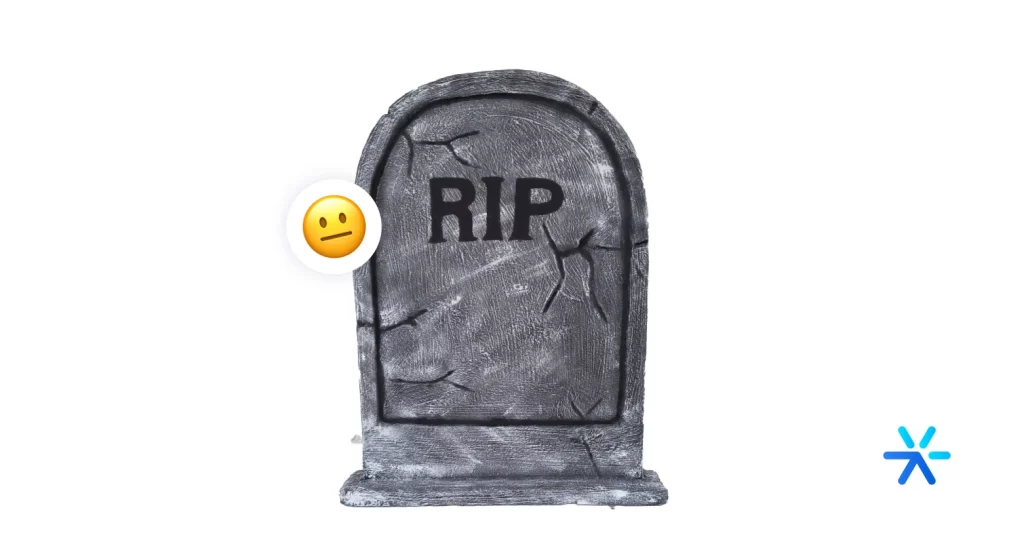
A large part of Brazilian startups are SaaS. Actually, most of them are.
That’s because this business format fits well with such a product. You don’t need to spend on packaging, logistics, retail partnerships, distribution, nothing: your focus is on selling.
But startups are difficult businesses to run and succeed due to their innovative nature. Many of them end up falling into traps that hundreds of others have fallen into over the years.
If you’re a startup, come and see this last part of the article. We’re going to talk a lot about what these pitfalls are and how to avoid them on your journey.
Fail Fast
One of the main philosophies of startups is fail fast — fail, but fail quickly.
This is one of the most interesting philosophies of this business model. Startups need it because they work at an accelerated pace to attract more customers and generate more data.
And let’s face it: businesses encounter flaws all the time, especially when starting out. Startups, being more innovative, end up exploring a lot of uncharted territory. And finding some cracks and quicksand pits along the way.
They are normal. It’s your contingency plans to deal with these flaws that matter.
How to Increase Sales?
The SaaS sales process, as you have seen throughout the article, involves some natural complexities.
However, one way to increase sales is to precisely reduce this complexity as much as you can. There’s a very explicit correlation between the number of sales and the difficulty of the sales process.
In this aspect, it’s important to always offer the three types of plans to your leads — Enterprise, Self-Service, and Transactional. You include three variables, but they don’t act to complicate the process — you’re offering simplicity to each target audience.
Another important point to consider is the prices you practice. The SaaS market is quite competitive, and if you have a price well above the market, it’s quite difficult to stand out and gain traction.
You will also need to generate buzz and constant traffic to your site. We’ve talked a lot throughout the article about your user’s independence, right? But this independence needs to be complemented by content.
Finally, it’s important to segment and qualify leads to reduce your CAC — Customer Acquisition Cost. This increases your revenue in the short and long term.
How to Add Value?
Never forget about the service part of SaaS sales. The SaaS customer is expecting not only good support, partnership, and support in growth but also constant system improvements.
Innovation is a very important ingredient in SaaS sales. You need to innovate to stand out from your competitors and demonstrate your value more clearly.
Doing what everyone else does but charging less is a trap: will you find customers? Definitely. But your market becomes much more competitive.
And there’s another facet of innovation that is also very important to mention. If you innovate but in a simple way, you are paving the way for other startups to create “clones.”
Two classic examples that are very close to our reality. Resultados Digitais created RD Station to automate Inbound Marketing processes. It’s an innovation, but it’s simple: today, there are already several small RD clones out there.
Rock Content created not just a platform to hire writers but a Content Marketing ecosystem that includes writing, revision, publication integrations, editorial calendar creation, and everything else your Content Marketing needs.
The result is that to this day, it’s very difficult to find a SaaS platform that comes close to the value it offers.
Adding value to your SaaS product is part of the Product Led Growth strategy. Here at Leadster, we do something similar — you can find many Chatbots out there, but you don’t find chatbot companies dedicated exclusively to making your leads grow.
Convert your visitors into leads with Leadster today
There’s no “ideal moment” to generate visitors and convert them into leads in your SaaS journey.
That’s because the time to generate leads is all the time. The right time to generate leads never arrives because it’s always here.
But just generating these leads is not your only concern. You need to qualify them in a simple, personalized, and scalable way. And that’s what you do with Leadster.
Our chatbot allows customization of flows at various different levels. According to the target audience, according to what the page says, the stage in the Funnel, and even where the person came from.
You can set up an ad on Instagram, another on Google Ads, and another on Facebook, all leading to the same Landing Page. In it, the chatbot recognizes the audience from these three different places and can approach them accordingly.
And if you’re ready to test, just click on the link. It’s free for 14 days, no credit card required.
Thank you for reading! See you in the next article.
